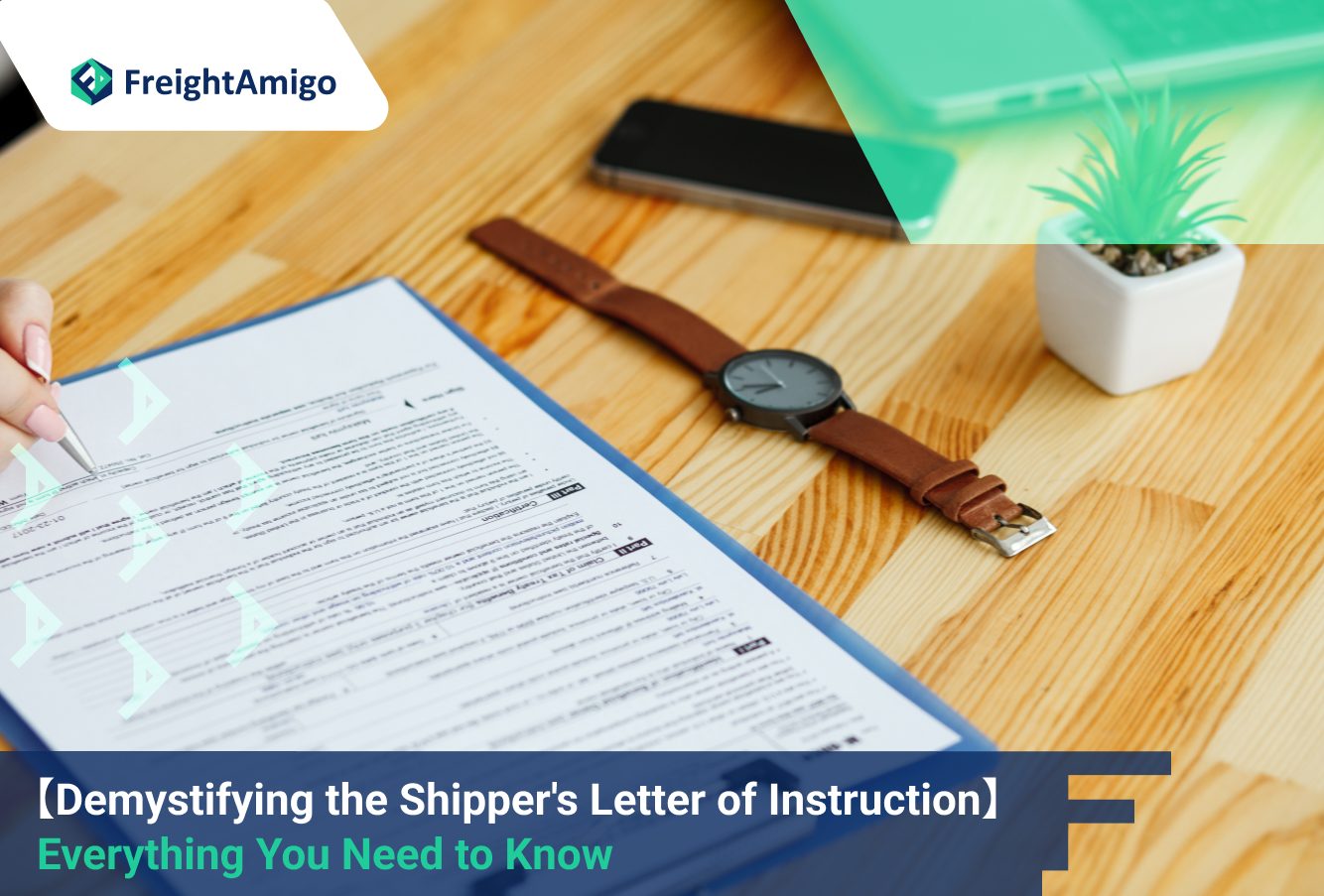The Shipper’s Letter of Instruction (SLI) is a crucial document in the world of international shipping. It serves as a set of instructions from the shipper to the freight forwarder, detailing the specifics of the shipment. Understanding the SLI and its importance can help streamline the shipping process and minimize potential errors or delays.
Latest update on 22 January, 2024 by Aiden Ng– Marketing Analyst at FreightAmigo
Want to compare the best Express, Air Freight, Sea Freight, Rail Freight & Trucking rates so as to have better control on cost?
Importance of the SLI in international shipping
The SLI plays a vital role in international shipping by providing clear instructions to the freight forwarder. It ensures that all parties involved in the shipping process are on the same page and have a thorough understanding of the shipment requirements. Without a properly filled out SLI, there is a higher risk of miscommunication, leading to delays, additional costs, or even the loss of goods.
Components of the SLI and their significance
The SLI consists of several essential components that aid in the smooth execution of the shipping process. These components include:
-
Shipper Information
This section requires the shipper to provide their contact details, including name, address, phone number, and email. Accurate shipper information is crucial for effective communication between all parties involved.
-
Consignee Information
The consignee’s information, including their complete address, contact person, phone number, and email address, must be accurately provided. This ensures that the shipment reaches the correct destination and is delivered to the right person.
-
Description of Goods
This section requires a detailed description of the goods being shipped. It should include information such as the type of goods, quantity, weight, dimensions, and any special handling requirements. Accurate descriptions prevent confusion and help the freight forwarder make necessary arrangements for safe transportation.
-
Freight Charges
The SLI should clearly state who is responsible for paying the freight charges, whether it is the shipper or the consignee. This eliminates any ambiguity and ensures that the financial aspect of the shipment is properly addressed.
-
Document Instructions
This component specifies the required documents that should accompany the shipment, such as commercial invoices, packing lists, and certificates of origin. Providing accurate document instructions helps prevent delays at customs or other regulatory checkpoints.
How to correctly fill out a Shipper’s Letter of Instruction
Filling out an SLI correctly is crucial for a smooth shipping process. Here are some key steps to follow:
- Gather all necessary information: Before starting the SLI, make sure you have all the required information readily available, such as shipper and consignee details, goods description, and any special instructions.
- Be accurate and specific: Provide accurate and specific information in each section of the SLI. Avoid using vague terms or generalizations that may lead to confusion or misunderstandings.
- Double-check for errors: Before submitting the SLI, carefully review all the information entered to ensure there are no errors or omissions. This helps minimize the risk of delays or additional costs due to incorrect information.
Common mistakes to avoid when filling out the SLI
While filling out the SLI, there are some common mistakes that should be avoided. These include:
- Incomplete information: Ensure that all required fields are filled out accurately. Leaving any section blank or incomplete can lead to delays or even rejection of the shipment.
- Inconsistent or incorrect information: Double-check that all information provided is consistent throughout the SLI. Inconsistencies or incorrect information can cause confusion and potential problems during the shipping process.
- Neglecting to include special instructions: If there are any specific handling requirements or instructions for the shipment, make sure to clearly communicate them in the SLI. Neglecting to include such instructions can result in mishandling of the goods.
How the SLI affects the shipping process
The SLI serves as a crucial communication tool between the shipper and the freight forwarder. It ensures that all parties involved have a clear understanding of the shipment requirements, reducing the risk of errors or delays. The SLI provides the necessary information for the freight forwarder to make appropriate arrangements for transportation, documentation, and customs clearance. By accurately filling out the SLI, the shipper contributes to a smoother shipping process, saving time and minimizing potential complications.
Benefits of using the Shipper’s Letter of Instruction
Using the SLI offers several benefits for both the shipper and the freight forwarder:
- Clarity and accuracy: The SLI ensures that all necessary information is clearly communicated, reducing the risk of miscommunication and errors.
- Streamlined process: By providing detailed instructions, the SLI helps streamline the shipping process, saving time and effort for all parties involved.
- Compliance with regulations: The SLI helps ensure compliance with regulatory requirements by specifying the necessary documents and instructions.
- Reduced risks: Accurate and complete SLIs minimize the risk of delays, additional costs, or loss of goods during transportation.
Tips for effective communication with freight forwarders using the SLI
To enhance communication with freight forwarders using the SLI, consider the following tips:
- Be clear and concise: Use clear and concise language in the SLI to avoid any ambiguity or confusion.
- Provide contact information: Include contact information for the shipper and consignee, making it easy for the freight forwarder to reach out for any clarifications or updates.
- Communicate special requirements: If there are any special requirements or instructions for the shipment, clearly communicate them in the SLI to ensure they are properly addressed.
- Maintain open lines of communication: Stay in touch with the freight forwarder throughout the shipping process to address any questions or concerns promptly.
Conclusion: Simplifying the shipping process with the Shipper’s Letter of Instruction
The Shipper’s Letter of Instruction (SLI) is a vital document in international shipping. By understanding its components, correctly filling it out, and avoiding common mistakes, shippers can ensure a smooth and efficient shipping process. The SLI helps facilitate effective communication between shippers and freight forwarders, streamlining the entire shipping process and minimizing potential delays or errors. By utilizing the SLI effectively, shippers can simplify the shipping process and ensure that their goods reach their destination safely and on time.
There are different options for cargo transportation. If you want to choose the most convenient and suitable solution, it is best to have the full support of logistics experts! If you are planning to ship goods overseas, please go to the FreightAmigo page for inquiries.
===
Read More:
【Unlocking Success】 Navigating Ecommerce Shipping to Singapore with Ease
【From Checkout to Delivery】 The Complete Guide to Shipping for Ecommerce Businesses to Malaysia
【Shipping to Taiwan】 A Comprehensive Guide for Ecommerce Businesses
===
If you have any inquiries on logistics/supply chain, feel free to contact FreightAmigo now:
Hotline: +852 28121686
WhatsApp: +852 27467829









































